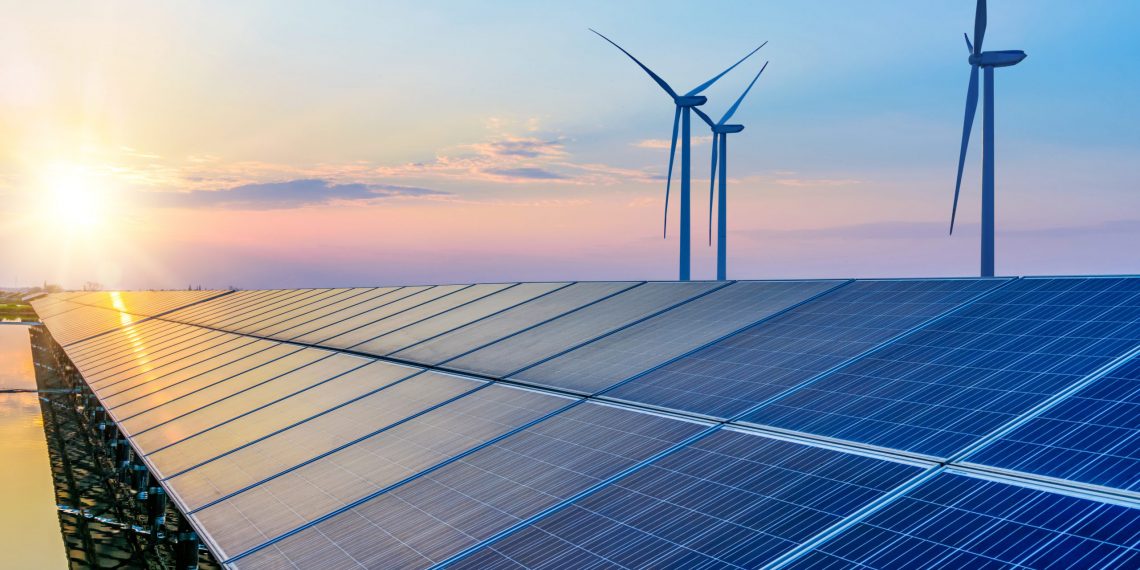
by Linda Allen, PhD, PE
The North American Development bank, based in San Antonio, TX, has emerged as an unlikely but important source of financing for renewable energy projects in the U.S.-Mexico border region, a region of North America that is well-suited for the generation of both solar and wind energy.
Over the past 10 years, the bank has provided or committed to provide around $1.8 billion in loans to partially finance an estimated $5.8 billion in solar and wind energy projects in the border region, the area serviced by the bank that encompasses 100 km on the U.S. side and 200 km on the Mexican side along the 3145-km long shared international border. Collectively, these renewable energy projects will have an installed capacity of about 3.3 GW, not an insignificant capacity for such as small geographic region.
The bank was established along with the Border Environment Cooperation Commission in 1994 under the original North American Free Trade Agreement and tasked with implementing drinking water, wastewater, and solid waste infrastructure projects. The bank’s $2.7 billion in paid-in and callable capital was to be used to finance these projects. However, during the early years of operation, the bank’s capital was severely underutilized because most publicly owned water, wastewater, and solid waste utilities could not afford its market rate lending. To increase the capital utilization, the bank’s sectoral mandate was expanded in 2002 to include other types of environmental infrastructure, including renewable energy projects. Since that time, these largely private sector projects have received a significant share of the bank’s market rate lending.
Related: What if the US-Mexico border wall was an energy corridor that could pay for itself?
Between 1994 and 2020, the bank provided or committed to provide a total of about $2.9 billion in market rate loans or guarantees and about $800 in grant funds to support the implementation of around 280 environmental infrastructure projects in the border region that have an estimated total construction cost of almost $10 billion. The $800 million in grant funds have been provided from either the bank’s own earnings or by the U.S. EPA under its Border Environment Infrastructure Fund and administered by the bank. These grant funds have been a key source of financing for the publicly owned water, wastewater, and solid waste projects over the years, whereas the market rate lending has been used to finance many private sector projects.
The first renewable energy project was approved in 2011 and since that time, a total of 33 solar and wind energy projects have been supported by the bank. These projects represent only 12% of the bank’s total projects but have received around 60% of the market rate lending.
Major wind energy projects that have been partially financed by the bank include:
- The 265.4-MW Ocotillo Express Wind Energy project in El Centro, CA,
- the 400-MW Los Vientos Windpower project in Cameron County, TX,
- the 199.5-MW EDPR Wind Energy project in General Cepeda, Coahuila, and
- the 250-MW El Mezquite Wind Energy project in Mina, Nuevo Leon.
Large scale solar energy projects include:
- The 317.5-MWac Puerto Libertad Solar Park project in Pitiquito, Sonora,
- the 141-MWac Santa Maria Solar project in Galeana, Chihuahua,
- and the recently approved 200-MWac BayWa Corazon Solar project in Webb County, TX.
Although the bank was established to address the lack of critical drinking water, wastewater, and solid waste infrastructure in the U.S.-Mexico border region, it has increasingly financed private sector projects, in particular renewable energy projects, due to mandated requirements to provide market rate lending.
These renewable energy projects may represent a small percentage of installed capacity for renewable energy in the U.S. and Mexico, but they are sizable projects for the border region. Both countries recognized the potential for the bank to finance these types of projects and in 2015 agreed to increase the bank’s capital allocation by $3 billion and have started to make additional contributions to paid-in and callable capital over the past few years.
About the Author:

Linda Allen is an independent researcher with a broad background in environmental engineering, management, and policy, and over twenty-five years of professional experience working on environmental issues in the U.S. and abroad. She has held positions with international, federal, regional, state and local government agencies as well as non-governmental organizations, consultants, and private industry. She has a PhD in public policy and master degrees in environmental engineering, planning, and management and her interdisciplinary research covers both domestic and international environmental policy issues.





